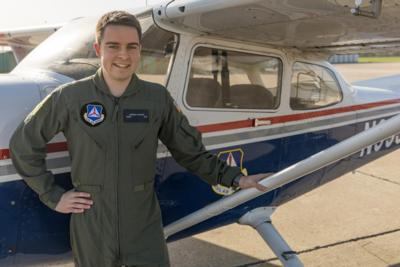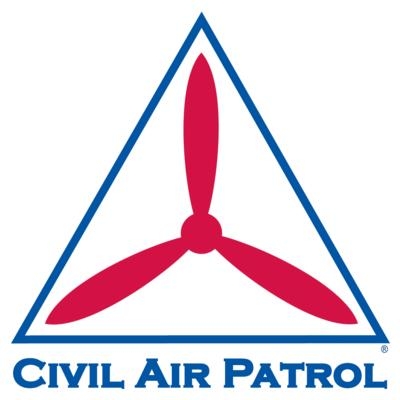Mon, Aug 02, 2021
When Things Go Bad, CAP Helps Set Them Right
By Gene Yarbrough
Civil Air Patrol (CAP) held a press briefing at OSH 21 highlighting their storied history and lifesaving technology and capabilities.

CAP is the 7th largest air force in the world with approximately 560 aircraft and is the largest drone operator in North America with over 2100 units deployed in every state of the union. Deploying both manned and unmanned aircraft systems is a key aspect of their duties to provide search and rescue services, along with myriad other important functions. The Civil Air Patrol is a civilian auxiliary of the United States Air Force and was originally tasked with patrolling the coastal waters of the United States for submarines and other foreign warships. Over the years, CAP’s duties have expanded to include search and rescue for downed/overdue aircraft along with disaster recovery, and humanitarian aid.
The spokesperson for CAP highlighted their duties have expanded to non-aviation search and rescue duties, recalling stories of hikers in adverse weather were rescued using new cellular based technologies. The new capabilities allow CAP personnel to locate persons based on their personal cell phones. The technology uses existing cell towers with unique software to triangulate approximate positions, combined with ADSB surveillance abilities allows CAP searchers to pinpoint distressed persons within a few feet of their actual positions. The technology is so advanced that many times the searchers are able to locate their targets within minutes of a distress call. This technology has already proven lifesaving in many instances.
From the CAP News release:
“…. In the 2019 search for Kurt Bohlsen in Massachusetts’ Berkshire Mountains, civil air patrol’s national radar analysis team extrapolated the data from his aircraft’s last known position. CAP’s cell phone forensics team also pinged Bohlsen’s mobile phone, to decipher precise coordinates that confirmed the radar analysis team’s data. In less than 30 minutes the survivors were rescued. Without CAP’s lifesaving technology and dedicated volunteers, these three PA32 crash survivors — one with a broken back — would likely have perished by morning due to exposure in subfreezing conditions.
Another excerpt:

“For example, CAP cell forensics was instrumental in saving the life of a 39-year-old hiker who fell into the subfreezing HOH River in northwestern Washington in January 2020. While his cellular provider was contacted by local authorities to help identify his location, the potential search area identified by the carrier was too expansive to be useful in the mountains at night. Twenty minutes after Civil Air Patrol was brought into the search effort, the individual, suffering from severe hypothermia, clicked on a message sent to his phone from cap, providing his location with 12-meter accuracy (which was more than 4 miles away from the search location provided by the hiker’s cellular provider). Using CAP’s data, a rescue helicopter was sent to the hiker’s location despite having never visually located the missing hiker— the hiker survived.”
This cell-based technology, along with the other advanced sensor capabilities, is an important and potent tool in the civil air patrol portfolio, used for the best of intentions in the worst of times.
More News
Also: Vertical Flight Society, NBAA Maintenance Conference, GA Honored, AMT Scholarship For the first time, students from Embry-Riddle’s Daytona Beach, Florida, campus took t>[...]
Hazardous Weather Information Summary of significant meteorological information (SIGMET/WS), convective significant meteorological information (convective SIGMET/WST), urgent pilot>[...]
"The need for innovation at speed and scale is greater than ever. The X-62A VISTA is a crucial platform in our efforts to develop, test and integrate AI, as well as to establish AI>[...]
(FAA) Inspector Observed That Both Fuel Tanks Were Intact And That Only A Minimal Amount Of Fuel Remained In Each Analysis: According to the pilot, approximately 8 miles from the d>[...]
“Pyka’s Pelican Cargo is unlike any other UAS solution on the market for contested logistics. We assessed a number of leading capabilities and concluded that the Pelica>[...]
 Airborne-Flight Training 05.09.24: ERAU at AIAA, LIFT Diamond Buy, Epic A&P
Airborne-Flight Training 05.09.24: ERAU at AIAA, LIFT Diamond Buy, Epic A&P ANN's Daily Aero-Term (05.07.24): Hazardous Weather Information
ANN's Daily Aero-Term (05.07.24): Hazardous Weather Information Aero-News: Quote of the Day (05.07.24)
Aero-News: Quote of the Day (05.07.24) NTSB Final Report: Cessna 150
NTSB Final Report: Cessna 150 Aero-News: Quote of the Day (05.08.24)
Aero-News: Quote of the Day (05.08.24)




